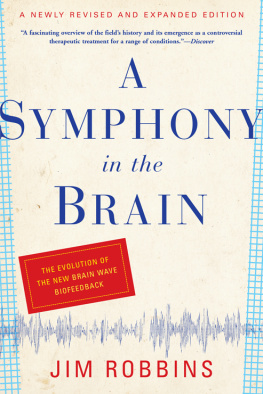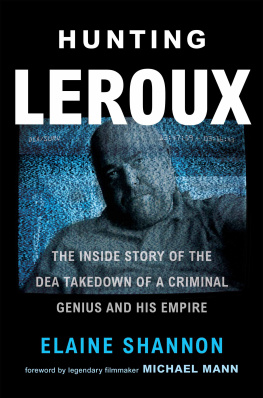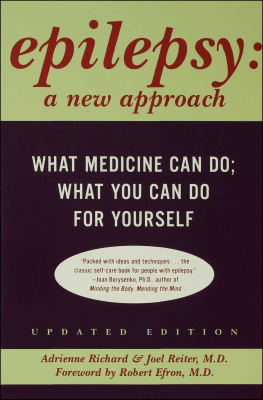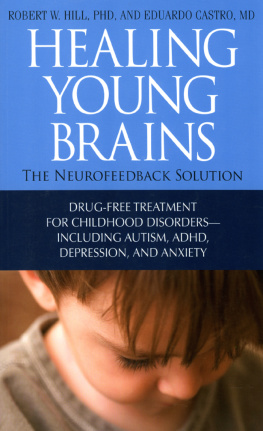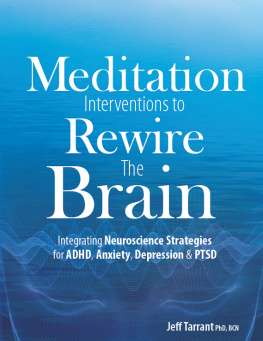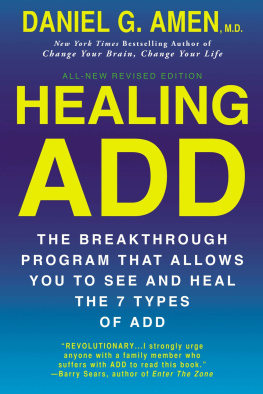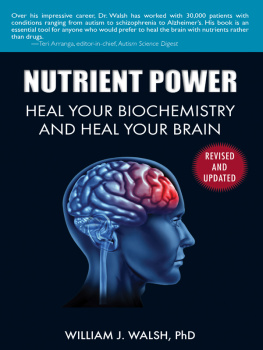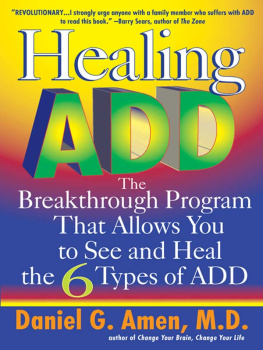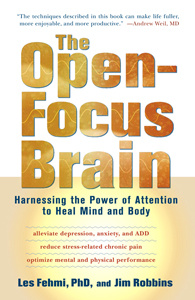
A Symphony
in the Brain
ALSO BY THE AUTHOR
Last Refuge:
The Environmental Showdown in the American West
The Open Focus Brain:
Harnessing the Power of Attention to Heal Mind and Body
(with Dr. Les Fehmi)
A Symphony
in the Brain

THE EVOLUTION OF THE
NEW BRAIN WAVE BIOFEEDBACK

JIM ROBBINS

Copyright 2000, 2008 by Jim Robbins
All rights reserved. No part of this book may be reproduced in any form or by any electronic or mechanical means, including information storage and retrieval systems, without permission in writing from the publisher, except by a reviewer, who may quote brief passages in a review. Scanning, uploading, and electronic distribution of this book or the facilitation of such without the permission of the publisher is prohibited. Please purchase only authorized electronic editions, and do not participate in or encourage electronic piracy of copyrighted materials. Your support of the authors rights is appreciated. Any member of educational institutions wishing to photocopy part or all of the work for classroom use, or anthology, should send inquiries to Grove Atlantic, 154 West 14th Street, New York, NY 10011 or .
Published simultaneously in Canada
REVISED EDITION
Library of Congress Cataloging-in-Publication Data
Robbins, Jim.
A symphony in the brain : the evolution of new brain wave feedback / by Jim Robbins.
p. cm.
ISBN: 978- 0-8021-4381-5 (pbk.)
eISBN: 978-0-8021-9153-3
1. Biofeedback training. I. Title.
RC489.B53 2000
616.8046dc21 99-086648
Designed by Laura Hammond Hough
Cover design by Rodrigo Corral
Grove Press
an imprint of Grove Atlantic
154 West 14th Street
New York, NY 10011
Distributed by Publishers Group West
www.groveatlantic.com
For the children:
To my own, Matthew and Annika;
To Jake Flaherty and Brian Othmer, who helped show the way;
And to all who suffer needlessly,
this book is dedicated.
Contents

Acknowledgments

I knew little about the brain and even less about biofeedback when I started this book, so bringing me up to speed on those things required a great deal of patience on the part of those I questioned. I am especially indebted to Sue and Siegfried Othmer and Dennis Campbell, who indefatigably answered my questions and indulged my interest, long before a book was in the works. Barry Sterman, Joel Lubar, Michael Tansey, Margaret Ayers, Les Fehmi, and Susan Shor Fehmi also patiently fielded the dumb questions that journalists routinely ask. Gratitude is owed to Ray Flaherty, Lisa Larsen, and Jake Flaherty for sharing part of their lives with me. A thank-you is also due to the following: Bernadette Pedersen for hooking me to the brain wave equipment and buying lunch. Rob Kall was an intrepid guide through the labyrinth of personalities and protocols of brain wave training. Chris Carroll was extremely generous with his time and comments and suggestions, and helped me understand the intricacies of the scientific process. Anton Mueller was integral to the process of conceptualizing this book. My agent, Lisa Bankoff, took care of business. To my good friend Vaughn Sarkissian, CPA, for his excellent abilities to account. Morgan Entrekin for his commitment. Andrew Miller for judicious changes. Richard Krizan for his wise ways and manuscript review. D.D. Dowden for the right side of her brain. Thanks also to Jeanne Jiusto, Faith Conroy, David Spencer, and Florence Williams for their reads, and to Sara Luth and Randall Mann for a place to stay. Tony Jewett: for the photo; and my parents, Jim and Betty. And as always to Chere and Matt and Annika for putting up with the long work days and travel that it takes to research and write a book.
May their brain waves often be synchronous alpha.
Preface to the Revised and Expanded Edition

T en years after I wrote my first article about neurofeedback for Psychology Today and eight years after the first edition of this book, neurofeedback has not exploded onto the treatment landscape, nor has the number of research projects grown exponentially.
Brain wave training remains a victim of the fact that it is outside mainstream concepts, is far ahead of the science of how it works, has a persistent but undeserved reputation as a softheaded new age idea, and is a model thatunlike the drug modeldoesn't lend itself to astronomical profits.
The field, however, has gained a great deal of acceptance that it didn't have a decade ago. It has moved out of the small circle of dedicated practitioners who gave birth to it and nurtured it, refusing to let such a powerful technique disappear. Civilization is closing in on the lost tribe of brain wave trainers that I described in the first book. The argument that studies are lacking is becoming irrelevant: first, because there are more studies; second, because modern medicine is failing to deal effectively with emotional stress beyond the use of medication; and third, because a revolution is under way in which people are taking more responsibility for their own health. Many people are no longer passive consumers of health care but are thinking for themselves. They don't trust big medicine and big pharmacology to have their best interests at heart. Health care is being democratized. More people also believe that absence of evidence is not evidence of absence: the fact that there are few rigorous studies of an idea doesn't mean the idea isn't powerful; it may mean that science refuses, for whatever prejudices, to study the concept. That is certainly the case with neurofeedback.
The evolution of the discipline continues. The technique is being used by a growing number of mainstream academicsfor example, at UCLA, the University of Utah, and the University of Washington. Neurofeedback research and treatment have taken off in Germany, Norway, Switzerland, and other parts of Europe, where they are unencumbered by flower child connotations from the 1960s. The 2006 World Cup champion Italian soccer team, L. A. Clippers center Chris Kaman, and the Olympic gold medal skier Herman Maier are among athletes who have benefited from neurofeedback. There are even brain hackers"technophiles who have built their own systems to play with their brain waves. What neurofeedback can do seems even more promising than it did a decade ago, especially in the areas of autism, attention deficit disorder, attention deficit hyperactivity disorder, anxiety, chronic pain, and post-traumatic stress disorder. There is a new generation of faster, more modern, more powerful equipment and techniques. The technology is expanding beyond sensors on the scalp to functional imaging equipment and new sensors that read physiological signals at a distance. Siegfried Othmer, a founder of one of the first neurofeedback businesses, predicted ten years ago, Someday neurofeedback will be adopted and no one will ever remember that they opposed it. The day is not quite here, but there is a palpable sense that the time is much closer at hand. I predict that it will not take another decade for the rest of the world to catch up. Neurofeedback is simply too powerful.
Next page
